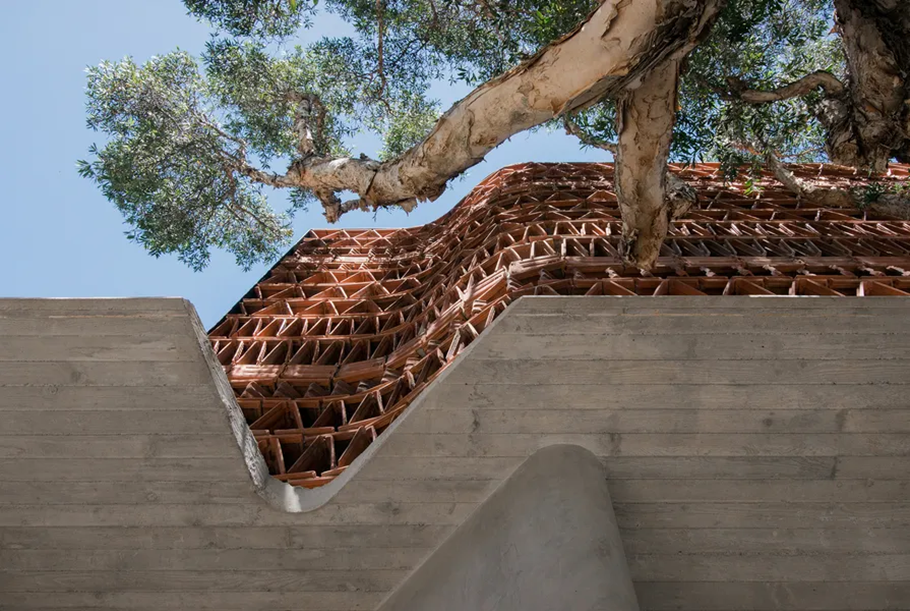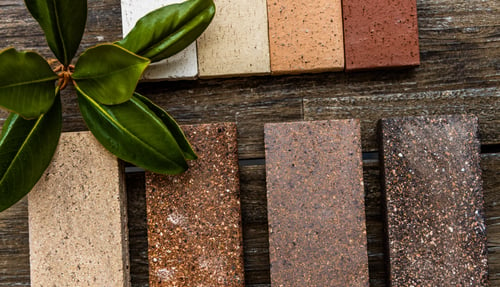Choosing the right cladding material is more than just a simple aesthetic choice - it allows architects to represent ideas, identities and even personalities through colour, style and texture.
With biophilic design taking the architectural world by storm, designers are seeking creative ways to express and strengthen the relationship between natural and built environments. Natural cladding materials can bridge this gap, with classic exterior cladding such as terracotta and brick facades leading the charge.
Reinvented for modern facades, these beloved natural choices combine the classic with the contemporary to revitalise design.
The Timeless Appeal of Brick Textures
Bricks are a comforting, familiar and yet creative aspect of facades, reminding occupants simultaneously of their family homes and the contemporary vibes of city living. From classic red brick cladding to new ranges of urban brick colours, brick facades are highly versatile. Architects can take the familiar brick texture and reinvent it for their vision, drawing on the classic or the modern to create unique, recognisable designs.
Some of the most memorable buildings in Australia — both old and new — boast textured brick facades, using this popular cladding material to showcase innovative design and engineering like never before. Historic features of our cities, such as Sydney’s Australian Museum, highlight the grandeur and elegance of traditional brick cladding, while contemporary designs showcase the unique new ways bricks can change the urban landscape. The recently unveiled Dr Chau Chak Wing Building, at the University of Technology Sydney, uses a brick facade to create curves and ripples across the front of the building, creating intrigue while showcasing the innovation and out-of-the-box thinking the university strives to achieve.
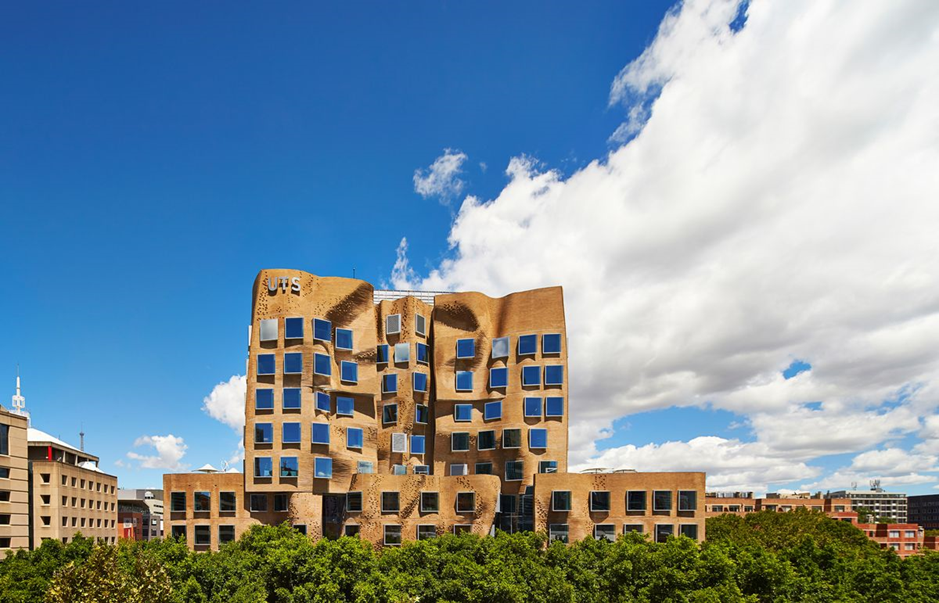
*Picture from Architecture AU - Dr Chau Chak Wing Building
The stunning Phoenix Central Park Performing Arts Centre has also benefitted from the brick revolution, with architects Durbach Block Jaggers and John Wardle Architects creating undulating flow across the front of the building, while experimenting with brick texture to create a visually and textually appealing masterpiece.
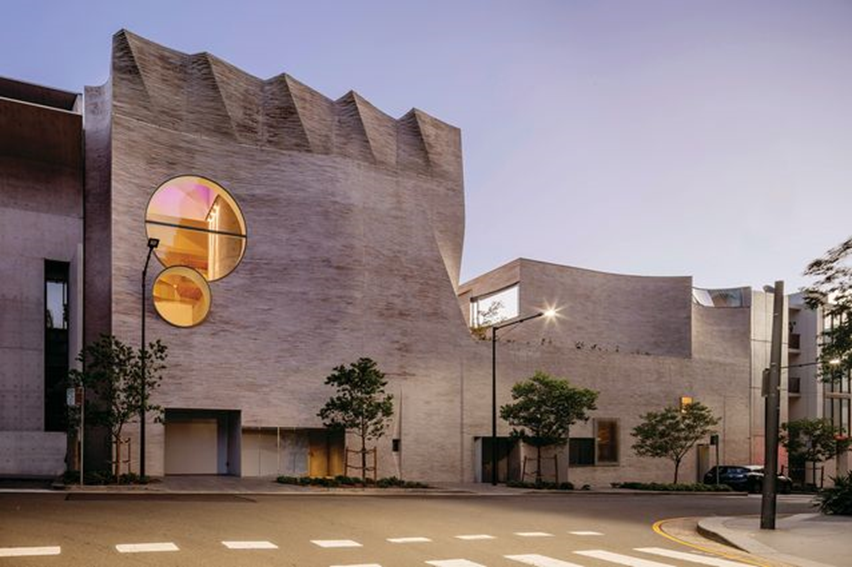
*Picture from Architecture AU - Phoenix Central Park Performing Arts Centre
Building with bricks still enjoys enduring appeal — and with new, inventive facade products such as lightweight brick facings, better known as brick slips, becoming prevalent in the market, it is easier than ever to create urban exterior wall masterpieces with a brick appearance and feel.
Contemporary Facade Designs with Brick
In contemporary facade design, clever and innovative use of brick can add a sense of heritage, or an ‘echo of tradition’ to new buildings. Some of Australia’s most iconic contemporary buildings allow their facades and architecture to showcase cultural and historical narratives. The iconic Audette house in NSW uses its distinctive brickwork to reflect culture and philosophy, while 32 Burnett Lane in Brisbane, recently renovated for a restaurant fit out, has had its brick facade refreshed to blend local history with the current and future contexts of the building.
The versatility of brick, and its ability to contribute to timeless yet inventive designs, can be attributed to its popular earthy texture, as well as the wide variety of colours available. Architects can experiment with brick colours, light and shade to create their ideal facade — one which can either stand out from, or complement, the rest of the building’s design. Intricate brickwork patterns are becoming more common on house facades, highlighting how this staple residential cladding type can be reinvented to create a distinct ambience or character.
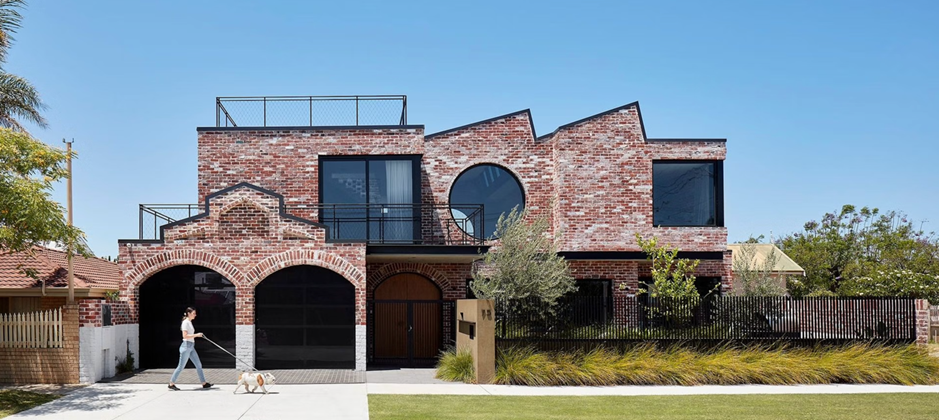
*Photo from Archipro - Brick House by State of Kin
Building with beautiful brick colours is a staple even in the modern architectural world — but recent innovations have made this even easier. Lightweight, sustainable facade options, such as brick facings, can capture the appearance, texture and even durability of traditional brick cladding—but with the added bonus of greater energy efficiency, longevity and ease of installation.
Terracotta: A Touch of Earthy Elegance
Terracotta is another beloved and timeless building material. Having been used in architecture around the world for thousands of years, its lasting popularity lies in its natural appearance combined with its durability. The distinct, earthy terracotta colour is easily recognisable for a design that incorporates classic elements, while natural terracotta texture also brings an instant connection with nature, ideal for biophilic designs.
Historic and beloved buildings throughout Australia have benefitted from the durability and enduring appeal of terracotta—such as Sydney’s Grace Hotel. Terracotta cladding also allows for a variety of creative modern facade options. The University of Queensland’s engineering faculty, designed by architects Richard Kirk and Hassell, presents an arrangement of hundreds of terracotta panels at different angles, creating a complex design reflective of faculty’s innovation and technology.
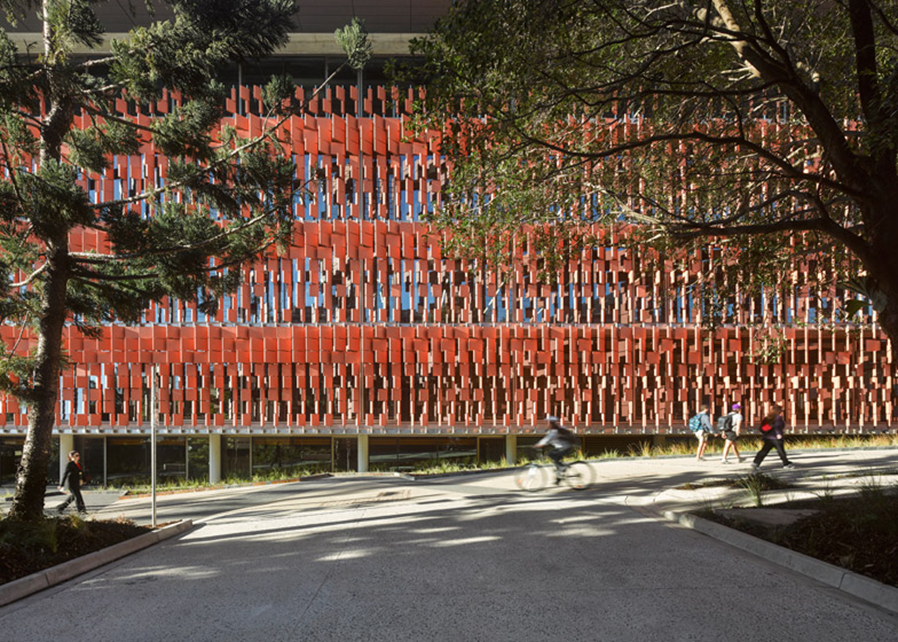
*Photo from Dezeen – University of Queensland by Richard Kirk and Hassell.
Attractive and customisable, with various colours and glazes available, terracotta can meet almost any design brief. A sustainable cladding material, it can also provide an excellent ventilated facade for improved energy efficiency of a building. The enduring durability of terracotta facades also guarantees reduced maintenance and replacement requirements for a more sustainable facade long term.
Lightweight and Sustainable Terracotta Solutions
An important consideration for many architects is choosing lightweight wall cladding, which can easily be installed on multi-storey or high-rise facades. Terracotta panels slot easily into a subframe or support system, allowing builders to construct a rainscreen system as well as a decorative facade. As a rainscreen, terracotta cladding allows moisture to drain away from the building, also promoting airflow for greater energy efficiency.
As well as its energy efficiency, terracotta cladding is, in and of itself, a material with superb environmental benefits. Formed from the earth, and fired for increased durability and longevity, terracotta cladding is built to last, reducing the consumption of energy and resources. This hardwearing material is also non-combustible, requires no long-term maintenance, and requires no sealing - offering a convenient, long-lasting and eco-friendly choice that ticks every box on the modern architect’s design brief.
Rafaello Rosselli Architect and Luigi Rosselli Architects made use of the longevity of terracotta tiles to create a sustainable facade for The Beehive studio in Sydney’s Surry Hills. Using recycled terracotta tiles that had withstood the test of time, the designers created a unique facade structure reminiscent of a honeycomb, experimenting with form to showcase both sustainability and creativity.
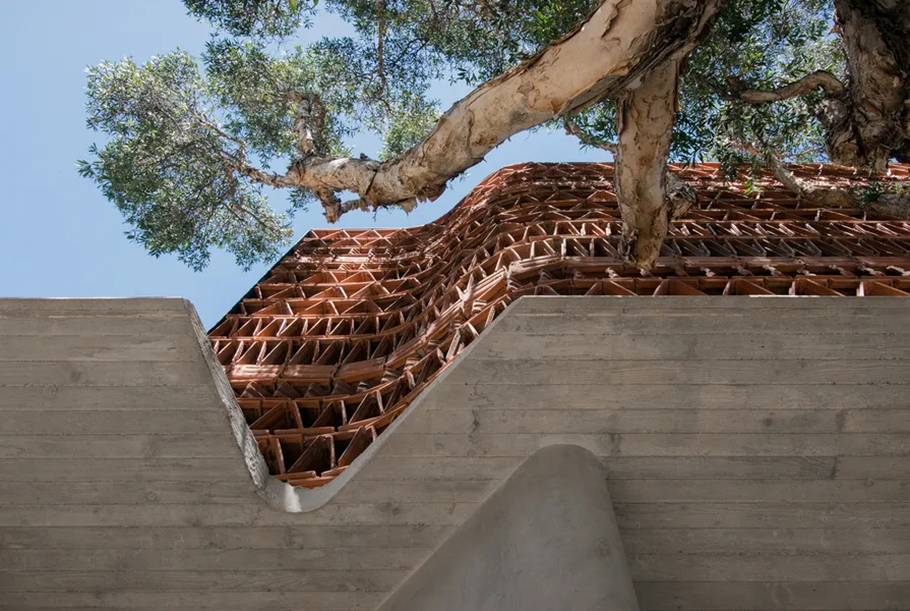
*Photo from ArchitectureAU – The Beehive by Rafaello Rosselli Architect and Luigi Rosselli Architects
Innovative Cladding Materials for Australian Exteriors
With a wide variety of exterior cladding options available - from traditional timber to contemporary fibre cement and aluminium panels, natural yet durable products such as terracotta and brick stand out for their many benefits. When it comes to lightweight wall cladding, designers are seeking products that can quickly and easily lock into a frame, for convenient installation on a multi-residential or commercial building. Both traditional cladding materials, bricks and terracotta panels have undergone numerous innovations over the years, with lightweight, grout and mortarless options available for seamless installation. From brick slips to specially sculpted terracotta panels, natural materials have undergone a revolution, allowing them to meet the needs of any facade today.
Blending Tradition with Modernity
Due to their versatility, brick and terracotta cladding materials have been adapted to suit contemporary facade designs. With inventive, innovative new ways of delivering these materials, leading cladding suppliers such as Fairview allow architects to embrace the fusion of aesthetic appeal with modern building technologies.
While brick has long been a popular material, its weight — as well as the hassle of grouting—can add delays to lead times in larger building facades. The invention of brick facade systems — such as Fairview’s Smartbric - can reduce or eliminate these issues. Made from lightweight brick facings, which can slot into a universal mounting track, Smartbric brings the traditional brick facade look to new heights. With a classic mortared brick look, designers can create a facade indistinguishable from traditional brick, with the added bonus of also creating a rainscreen and being able to install quickly on high-rise facades. To remove the inconvenience of mortaring, a unique interlocking, mortarless brick slip is also available within the Smartbric range.
Terracotta has also been reinvented for the contemporary era, through products such as the Clayton terracotta cladding system. Combining the charm of natural terracotta cladding with modern building techniques, Clayton offers high-strength terracotta panels in a range of colours and textures, for facades that are not just visually appealing, but tactile as well. Non-combustible, high-performing and with colour vitrified into the clay during firing, Clayton terracotta provides an eco-friendly cladding panel with a range of styles to suit contemporary facade design.
Conclusion
Selecting the right cladding materials can be crucial to conveying a desired architectural message. As well as seeking to achieve a natural-look facade, designers are searching for sustainable and durable products that can live up to the requirements of modern facade design.
Brick and terracotta cladding both offer limitless possibilities in facade design. With their earthy textures, durability, ease of installation and environmental benefits, both options allow for the creation of structures that are not only aesthetically pleasing, but also rich in narrative and sustainable features. Whatever the aesthetic brief, contemporary brick-style cladding and terracotta panels can blend beloved traditional aesthetics with the modernity of long-lasting, environmentally friendly facades.
Ready to transform your facade? Want to discover the natural beauty of terracotta or brick?
Request a sample today to discover the perfect texture and colour to suit your project.
